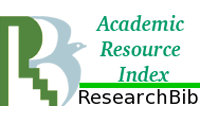Marketing Strategy in Increasing Ballroom Sales at New Kuta Hotel
Abstract
This research aims to increase ballroom sales at New Kuta Hotel, to find out marketing strategies that should be used by the sales & marketing departments to increase ballroom sales and to find out which strategies are most effective in marketing strategies by sales & marketing department. The analysis techniques used are qualitative descriptive analysis, quantitative descriptive analysis, Internal Factor Analysis Summary Matrix (IFAS), External Factor Analysis Summary Matrix (EFAS), Internal–External Matrix (IE), SWOT Analysis and Quantitative Strategic Planning Matrix (QSPM). Based on the results of IFAS matrix analysis, the main strength is the ballroom sales can help increase hotel revenue, while the main weakness is the incentives imposed by the sales & marketing departments are less appropriate. Based on the EFAS matrix analysis, it was discovered that the main opportunity was the ability of sales & marketing to bring in customers while the main threat faced was the budget considered by the customer. The IE Matrix study results put the company in the Growth Strategic (Cell II) position. SWOT analysis produced eight alternative strategies of marketing strategies from the eight strategies and obtained three marketing strategies that were prioritized and calculated through QSPM Matrix with a total TAS of 181.29.
Keywords
Full Text:
PDFReferences
Hawari, F., & Dinastry, R. S. (2016). Redesain Interior Ballroom Multifungsi Edelweissm Untuk Meningkatkan Kualitas Akustik (Studi Kasus: Ballroom Edelweiss Idjen Suites Malang, Jawa Timur). Jurnal Sains Dan Seni ITS, 5(2), 2337–3520.
Kesrul, M. (2004). Meeting Incentive Trip Conference Exhibition. Graha Ilmu.
Kotler, P., & Kevin, K. (2012). Marketing Management (14th ed.). Pearson Prentice Hall.
Murti, S., & Soeprihanto, J. (2010). Pengantar Bisnis (Dasar-dasar Ekonomi Perusahaan) (5th ed.). Liberty Yogyakarta.
Permadi, S. Y., Djawa, D., & Sangari, F. (2016). Analisis Forecast Banquet Revenue Pasca Renovasi Grand Ballroom. Jurnal Hospitaliti Dan Pariwisata, 3(2), 114 – 232.
Rangkuti, F. (2016). Analisis SWOT Teknik Membedah Kasus Bisnis. Gramedia Pustaka Utama.
Setyorini, H., Effendi, M., & Santoso, I. (2016). Analisis Strategi Pemasaran Menggunakan Matriks SWOT dan QSPM (Studi Kasus: Restoran WS Soekarno Hatta Malang). Industria: Jurnal Teknologi Dan Manajemen Agroindustri, 5(1), 46–53.
Simanjuntak, M. (2013). Opportunity for tourism professional development in Indonesia. Binus Business Review, 4(1), 473–486.
Sugiyono. (2015). Metode penelitian pendidikan: Pendekatan kuantitatif, kualitatif dan R & D. Alfabeta.
Trimurti, C. P., & Utama, I. G. B. R. (2019). An investigation of tourism motivation and tourist attraction of tourists to bali. JMK, 21(2), 130–133.
Wagey, A. B., Pitanatri, P. D. S., & Sujatha, D. K. (2020). Marketing Communications Mix Strategy to Improve Room Sales at The Ritz Carlton Jakarta Mega Kuningan. (TRJ) Tourism Research Journal, 4(1), 45–61.
DOI: http://dx.doi.org/10.22334/jbhost.v6i2.225
Refbacks
License URL: http://creativecommons.org/licenses/by/4.0/
Visited Number:






















